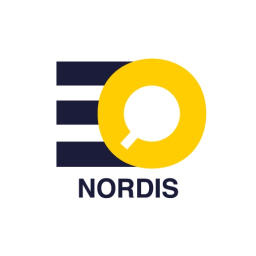The guide aims to give education providers, teachers and learners basic information about the functioning of AI, its capabilities, limitations, ethical challenges, benefits, misuse, AI pedagogy and AI literacy.
Translation in English and later in Swedish are available here.
Faktabaari launched today at Helsinki NORDIS DIL Forum a new AI Guide for Teachers in Finnish. An English translation is underway and should be published in February–March 2025. See the Table of Contents at the end of this blog.
The Guide is a follow-up to the English version of the Digital Information Literacy guide by Faktabaari within NORDIS in 2022.
The aim of the AI Guide for Teachers is to give education providers, teachers and learners basic information about the functioning of AI, its capabilities, limitations, ethical challenges, benefits, misuse, AI pedagogy and AI literacy.
The aim is to clarify the educational perspective:
- WHAT is AI and how does it work (AI as a subject for learning).
- HOW AI can be used in a responsible and ethical way to support teaching and promote student learning (AI as a tool for teachers).
- HOW is AI changing society (Social impact of AI on the labour market, knowledge management, environment, communication, future professions, etc.).
- WHY is there a need for a healthy critical approach to AI outputs (The challenges of AI).
The guide has been written as clearly as possible to make it easy to read and understand. References will allow anyone to find additional information.
As AI technology is still in a state of flux and development, we have tried to select information that will stand the test of time. The collection of articles is based on several international recommendations on AI in education published by the EU, UNESCO, OECD, UNICEF and others.
In recent years, AI technology has advanced so rapidly that it has been difficult for education authorities to keep up with developments and provide updated guidance and in-service training for teachers. Teachers have therefore found themselves in a difficult position: How should they teach students to use AI technologies safely and responsibly when schools do not have clear guidelines on which software and services are safe to use and how to teach new skills within a partly outdated curriculum?
The relationship between education and AI is changing rapidly. AI developments and new easy-to-use AI systems – in particular generative AI – have already had a significant impact on teaching and learning. As machine intelligence increases and labour markets and economies change, education systems will need to adapt to equip students with the knowledge and skills needed for the jobs of the future.
These developments require education and training providers to update their curricula and teachers to upgrade their skills to make use of new technologies.
See the Table of Contents of AI guide for Teachers in English and Swedish.
More
- The guide is available here.
- NORDIS literacy portal
- Faktabaari EDU website (in Finnish)
-
Inquieries to Faktabaari EDU: edu@faktabaari.fi


NORDIS is co-funded by the EU (101158604). This content solely reflects the views of Faktabaari and the Nordic Observatory for Digital Media and Information Disorder. The EU Commission cannot be held responsible for any use of the information presented here.

